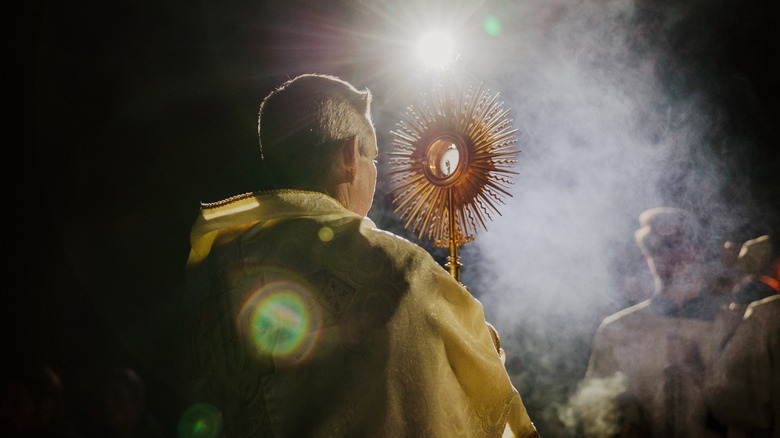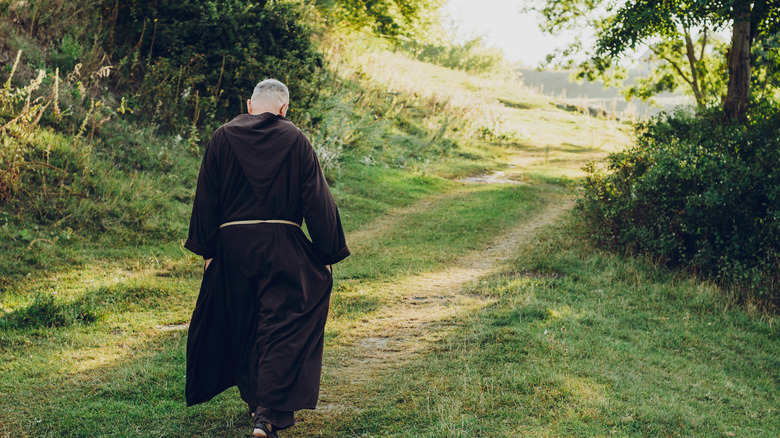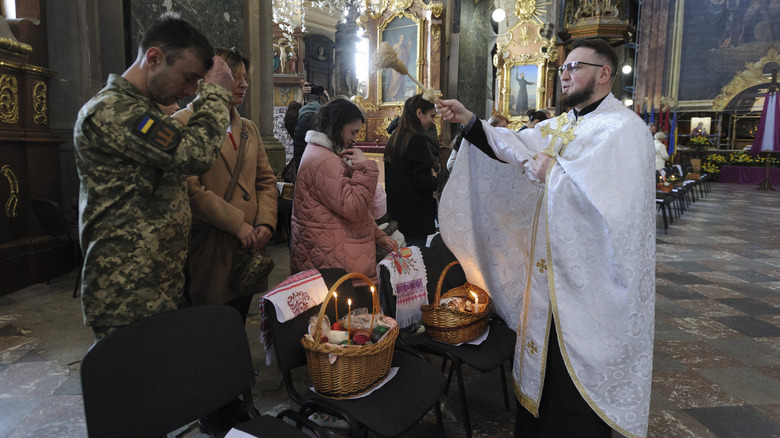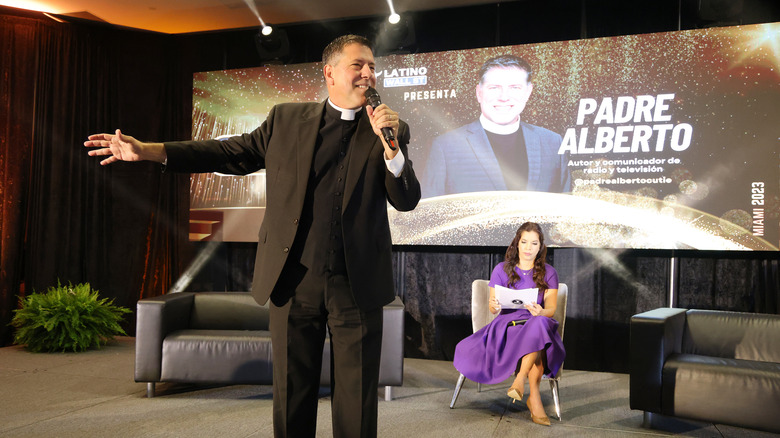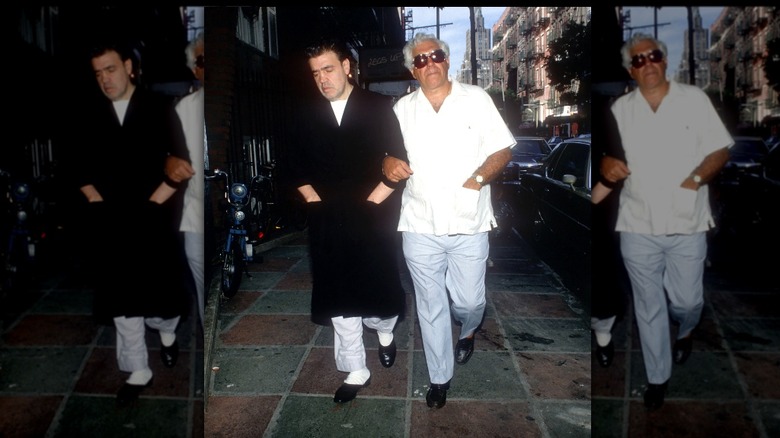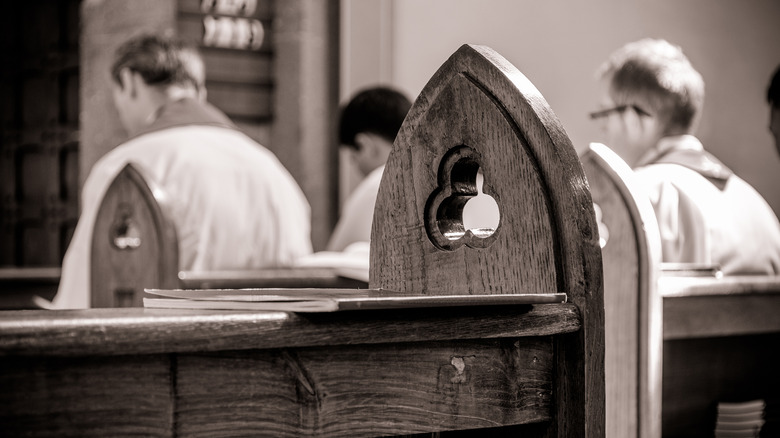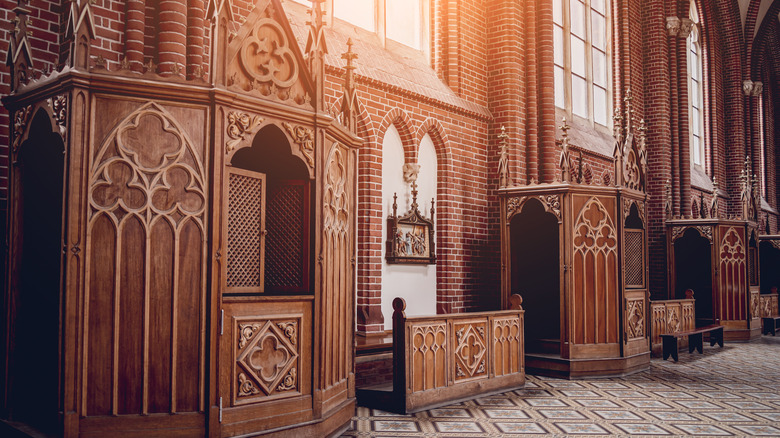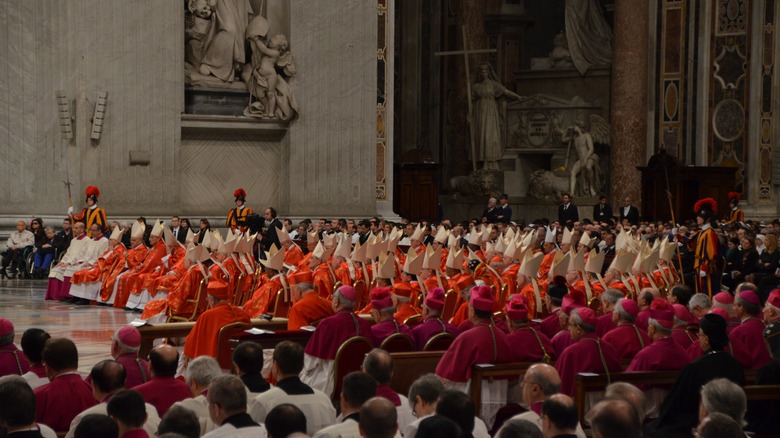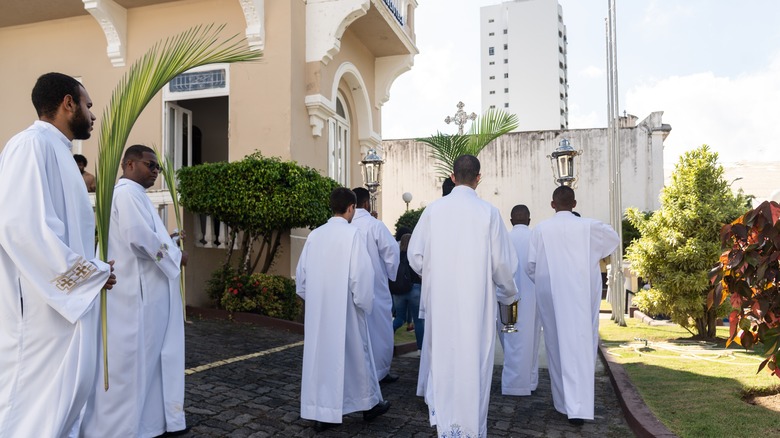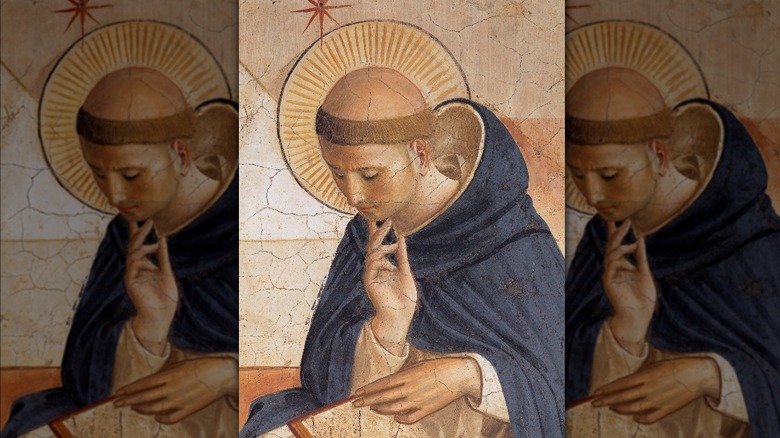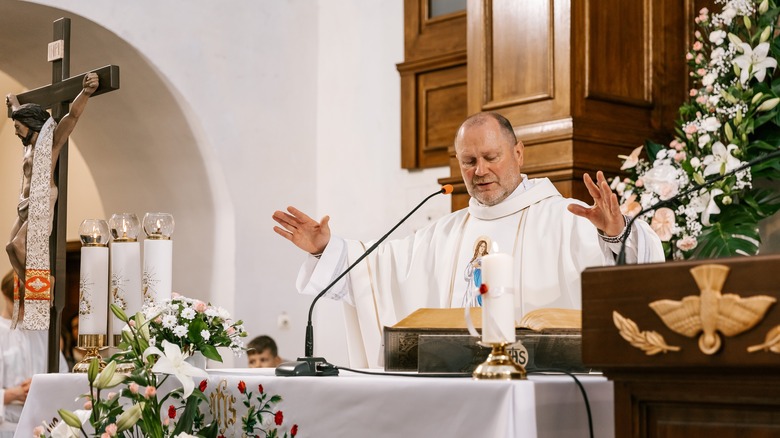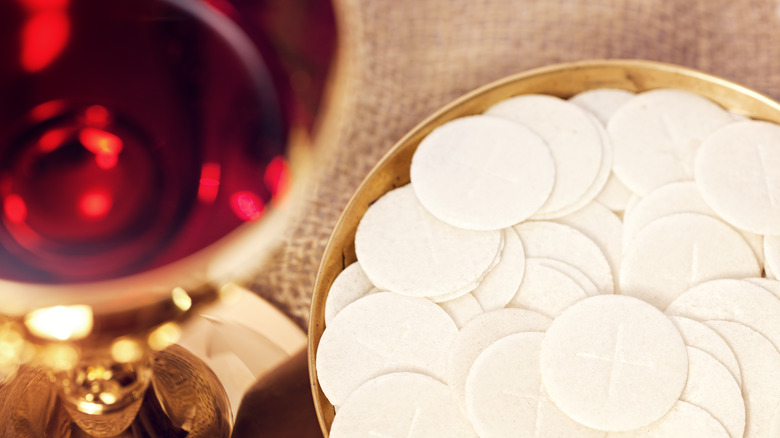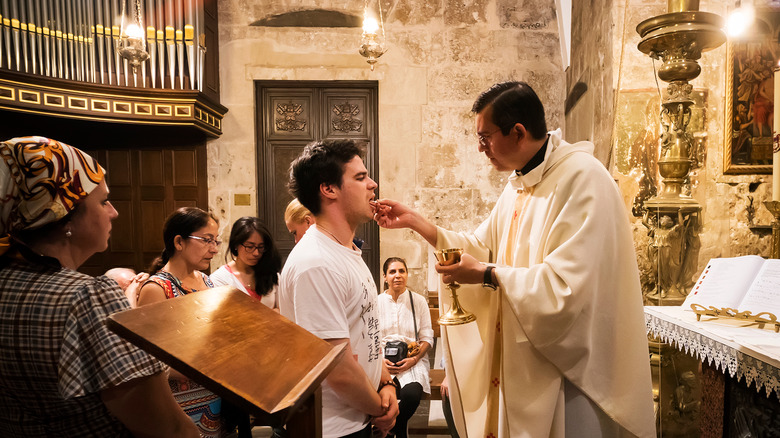Unexpected Rules Catholic Priests Have To Follow
Being Catholic is often synonymous with rule-following in secular society. Kneeling, standing, obeying the pope, attending Mass every Sunday, eating the body and blood of Christ — they never seem to end. Catholic priests have to follow even more rules, ranging from the well-known vow of celibacy to lesser-known rules regarding talking with law enforcement, dealing with sinful politicians, what to do with soiled communion wafers, and daily prayer.
To the non-Catholic, it seems Catholic priests just have to follow a lot of crazy, arbitrary rules. But once one takes a look at the rationale behind the rules, particularly in the context of Catholic theology and the lives of Christ and the Apostles, they start to make sense. The Catholic church teaches that if one is going to serve God totally, including handling his literal earthly form, sacrifices are required. In this case, it means total obedience to the rules and renouncing earthly pleasures like marriage and sex — things that often run counter to secular modern culture — and a few more besides.
Roman Catholic priests can't marry – full stop
If anyone knows anything about Roman Catholic priests, it's the renunciation of sex and marriage. The Church defends celibacy on the grounds that a priest cannot serve two masters. Interestingly, it wasn't always this way.
In the first centuries of the Church, a basic expectation was that priests would forswear marriage after ordination. But the canons of the Council of Elvira (Spain) of A.D. 305 explicitly required clergy to give up sex with their wives, meaning married men were being ordained to the priesthood. The Lateran Councils of 1123 and 1139 confirmed these rules, annulling all marriages contracted after ordination and forbidding the faithful from attending any Mass given by a priest who was married or had a concubine. The fact that married priests were forbidden from celebrating Mass suggests the Church had shut out married men from the priesthood definitively by the latter date.
Although celibacy is the rule, a little-known tidbit about Pope Francis is that he can change it. The pontiff has discussed potentially revising the rule, although he has not taken any action on the matter as of 2024.
Eastern Catholic priests must marry before ordination
The Catholic Church doesn't only include Roman Catholics. There are another 23 Catholic churches with their own unique liturgies, languages, traditions, and laws, mostly in Eastern Europe and the Middle East. These churches all have one thing that sets them apart from their Roman cousins: they allow married priests.
The Eastern Catholic discipline of clerical marriage is often incorrectly presented as allowing priests to marry. In reality, they simply follow the millennia-old Christian practice of ordaining married men. This is because, in the Eastern traditions, all men have one of two callings: marriage or celibacy, irrespective of clerical status (as opposed to Roman Catholicism's marriage or priesthood). But once ordained, the same restrictions found in the Roman Catholic Church kick in — widowed priests cannot remarry and are required to live celibately thereafter.
Ukrainian Catholic priests interviewed by The Washington Post have said that clerical marriage definitely creates a different relationship with their flock, but allows the priest to better understand parishioners' problems, particularly with families, because he lives them out with his own children. But this does not mean Eastern Catholics spurn celibacy. Married priests cannot advance to leadership positions, as Eastern Catholic churches draw their bishops almost exclusively from celibate monks.
For defrocked priests, celibacy still applies
If a priest commits a particularly flagrant offense, he can be defrocked, otherwise known as being laicized. Although the Church no longer strips priests of their clothes as in the past, it still takes away their ministerial powers. Defrocking, however, is not a license to then do all the things priests couldn't do before — at least not if they want to remain in the Church's good graces.
Catholicism's basic rule for the priesthood is "once a priest, always a priest," and canon 1583 of the Catechism of the Catholic Church reads: "he cannot become a layman again in the strict sense, because the character imprinted by ordination is forever. The vocation and mission received on the day of his ordination mark him permanently." So while he cannot celebrate Mass or give sacraments (except in extreme circumstances of life and death), he still must observe celibacy. So a priest defrocked for having an affair with a parishioner cannot simply go and marry his paramour in a Catholic Church.
Since 1972, the Vatican's Sacred Congregation for the Doctrine of Faith has required laicized priests wishing to marry to get papal permission first. This is hard to obtain, as simply wanting to marry is not a reason – let alone wanting to, say, marry a parishioner involved in an illicit affair. Because of this high bar, it is not uncommon for such priests to simply leave Catholicism, like Rev. Alberto Cutie (above), who became Episcopalian.
Priests with children must follow the Vatican's secret rules
Despite strict Roman Catholic rules for priestly celibacy, rule breakers are legion. Even popes were not above it: Pope Alexander VII's sordid, scandalous life produced several children. And in one New York mafia story that seems too crazy to be true, Italian priest Louis Gigante (above, right in white shirt), brother of Genovese Family boss Vincent Gigante, had a secret son to whom he left a $7 million fortune.
As it turns out, the Vatican has rules for these situations. The official term for such children, according to Slovenian archbishop Ivan Jurkovic, is "children of the ordained" (via The New York Times). In 2019, Vatican spokesman Alessandro Gisotti told the outlet that the Vatican has written guidelines for dealing with these children, but they are for internal consumption only.
Nevertheless, Gisotti said the guidelines basically call for priests with children to take responsibility for their actions. His natural duty as a father trumps his duties as a priest, and he is thus expected to request laicization and go be a full-time dad. What little Pope Francis has said agrees with this: The pontiff has said that while a priest who violates celibacy can get a second chance, there is no do-over once a child is involved. Tim Doyle, the son of an Irish priest and activist on behalf of children born into similar circumstances, has called on the Vatican to publicly acknowledge the problem and make the guidelines public.
Priests start their days at 3 a.m.
There's no sleeping in for Catholic priests – they start their days bright and early at 3 a.m. to pray the Liturgy of the Hours. This set of seven (or eight prayers) is the obligatory way of sanctifying the day, by allowing God into a person's daily activities and orienting them towards good.
Praying the Liturgy of the Hours originates from the Jewish practice of praying three times a day. The first Christians were Jews, and thus continued their daily prayers from the Psalms as they had before Christ's ministry. Eventually, the practices diverged depending on one's status. Ordinary people would only pray twice – once in the morning, and once in the evening. For priests and monks, who were expected to devote themselves to God and prayer in totality, it expanded into the seven-or-eight-prayer rhythm of today. There is nothing stopping lay people, however, from attempting to pray all seven prayers.
Because priests are busy people, especially where there are shortages, it is not unheard of to collapse certain prayers into one, usually the night and midnight prayers. Monks and nuns, however, continue to observe the strict rhythm.
Priests cannot reveal what goes on in the confessional – ever
Catholic priests hear every sort of sin in the confessional, including penitents owning up to serious crimes like murder. If they are truly sorry, then the priests must not only absolve them, but keep everything to themselves on the pain of excommunication.
The priest's silence is called the Seal of Confession, and it is considered absolutely inviolate. Since confession is a matter between the penitent and God (the priest is an intermediary acting for Jesus), the confession's contents cannot be divulged under any circumstances whatsoever – even to law enforcement. The priest cannot even say whether a penitent confessed to him. Nineteenth-century New York priest Rev. Anthony Kohlmann exercised this exact prerogative when authorities asked him to testify against two thieves. The priest, however, can encourage the penitent to make things right. For instance, the priest might suggest the penitent turn himself in, return stolen property, or give material support to anyone he has harmed as restitution.
The Seal of Confession is so important that priests have died for refusing to violate it. St. John Nepomucene, for instance, was martyred for refusing to tell King Wenceslaus IV of Bohemia the contents of his queen's confessions. Three other priests – a Mexican saint and two Spaniards – were also executed for refusing to reveal the confessions of combatants to government operatives and generals during civil wars in their respective countries.
Cardinals over 80 can't vote for pope
The cardinals, who are the highest-ranking clerics of the Catholic Church after the pope, are responsible for secretly electing the next pope when one dies – at least, most of them are. Under the Vatican's apostolic constitution, "Romano pontifici eligendo," any cardinal over 80 doesn't get a vote.
This rule, unlike other lesser-known rules, does not have a theological basis. It has only been in place since 1970, when Pope Paul VI issued a document called "Ingravescentem aetatem." The opening line highlighted "The natural relationship between the increasing burden of age and the ability to perform certain major offices." In other words, the pope's justification seemed to imply that older cardinals were not in the right state of mind to vote in a papal election.
The pope's opponents, however, rejected this explanation and instead saw a political motive. Pope Paul VI oversaw the liturgical reforms of the Second Vatican Council, whose biggest change was to jettison the old Latin Mass for the current Novus Ordo Mass, igniting the current controversy over which Catholic Mass is the correct one. Arch-conservative Cardinal Alfredo Ottaviani noted that Paul's ban had no basis in Catholic tradition – the oldest cardinals were considered the wisest. The ban, however, conveniently disqualified 25 cardinals, around half of whom were Italian and almost all of whom were traditionalists opposed to certain Vatican II reforms. Thus, it was widely seen as an effort to stack the deck in favor of Vatican II proponents and non-Italian cardinals.
Only men can become priests, but why?
Pretty much anyone even remotely acquainted with Catholicism knows only men can become Catholic priests. While opponents of the institution – even cardinals – have accused the Church of being behind the times on women's ordination, the Catholic Church's reasoning behind it might not be so well understood: The male-only priesthood is grounded in the events of the Last Supper.
At the Last Supper, Jesus told his Apostles, "This is my body, which will be given for you; do this in memory of me" (Luke 22:19). During a Catholic Mass, the priest repeats those words as the Eucharist is consecrated on the altar. But Catholics don't believe that it is merely symbolic. According to paragraph 1548 of the Catechism of the Catholic Church, the priest is acting "in persona Christi" – in the person and place of Jesus Christ himself. The Catechism continues: "It is the same priest, Christ Jesus, whose sacred person his minister truly represents."
In a nutshell, since Jesus was a man, women cannot act in his person – only other men can. But there's more. Catholicism believes that the church is Jesus' (and hence priests') bride. When the hosts are consecrated during Mass, the priest presents the gift of the Eucharist to his "bride" – the Church – in an act that mimics the bride and groom becoming one flesh in a wedding. And so, in the eyes of the Catholic Church, since a woman cannot become one flesh with the feminine church as the masculine Jesus did, they cannot become priests.
Some priests have to shave their heads
The practice of tonsure – partially or fully shaving the head of new priests or monks – was mostly suppressed in 1972 under Pope Paul VI. However, the practice is still mandatory among a select few orders of monks and societies of Catholic Traditionalists – groups of priests still in communion with Rome who prefer to observe the old Latin Mass instead of the current Novus Ordo. These still follow the old tradition, which involves shaving the heads of seminarians in their second year to mark their definitive transition from civilian life to the priesthood.
In the ancient Mediterranean it was common to shave the heads of enslaved people, and anyone with money that went bald would buy a wig to avoid being confused for one. When Christianity came around, it became common practice to shave new monks' heads, marking them out from the rest of society as being enslaved to Christ. The symbolism was twofold – in shaving one's hair, one also symbolically renounced worldly vanity associated with excessive pride in one's physical appearance. For most Roman Catholic monks, it meant shaving the center of the head. In the Greek Catholic Churches, whose unmarried priests are considered to be monks, the practice of tonsure is still mandatory.
Priests can only celebrate one Mass a day
Because Sunday Mass is the centerpiece of Catholic worship, Roman Catholic priests are bound with a number of rules meant to ensure they maintain a healthy reverence for its practice. Pursuant to this goal, canon 905 of the Code of Canon Law limits priests to celebrating Mass once a day.
The reasoning for the rule is twofold. On one hand, it assumes that the more one does something, the less special that activity becomes – familiarity breeds contempt, as the old cliche goes. The Catholic Mass is supposed to be something extraordinary, where the congregation witnesses the miracle of the bread and wine becoming the literal flesh and blood of Christ. The Church's logic goes that priests who routinely celebrate Mass multiple times a day will stop seeing it as something special, and so be less careful and reverent when they do celebrate it. Nevertheless, the issue of priest shortages has often forced bishops to rescind the restriction for Sundays and obligatory holy days, giving Catholics enough opportunities to attend Mass. In these circumstances, the limit goes from one Mass per priest to three.
The other reason is more practical and related to financial abuse. During Mass, the congregation gives donations, some of which is spent by the priest for the good of the parish. This system was open to abuse if unscrupulous priests helped themselves to parish donations from multiple Masses. Thus, the Vatican closed the loophole by restricting them to one Mass.
Priests cannot ever throw Jesus' Body or Blood away
For Catholics, the Eucharist — the consecration and consumption of bread and wine — is a big deal. The Eucharist has started wars, led to martyrdoms, and inspired devotion that non-Catholics struggle to understand. To Catholics, however, once consecrated, those little communion wafers are the literal body and blood of Jesus Christ — a doctrine known as transubstantiation — and must be treated with great reverence.
At communion, they are ideally received on the tongue while kneeling and should never touch the ground, which is why altar boys carry plates to catch any hosts that fall. When it does happen, however, priests have clear instructions. Ideally, the host should be picked up and given to the parishioner to consume. Otherwise, the priest can consume it himself and give the parishioner a different one.
For those who do not believe in transubstantiation, the logical solution for hosts that are too soiled to be consumed might be to trash them. But for a Catholic priest, that involves throwing a piece of God's living, incarnate body into a garbage can. Instead, priests dissolve the soiled host in holy water and drain it into a special sink called a sacrarium, which runs directly into the ground instead of the sewers. This dignified manner of disposal avoids defiling Jesus' body with human and other waste. If the blood of Christ is spilled, priests clean it up with special cloths called purificators, wash them twice by hand, and drain them directly into the ground.
Priests have to deny public sinners communion
In 2019, a South Carolina priest denied President (then candidate) Joe Biden communion over his support for legal abortion. While the priest's actions ignited a firestorm, even within the Catholic establishment, as far as the Catholic Church's rules were concerned, the priest did everything right.
When Catholics receive communion, they cannot have committed any serious sins since their last confession, although priests are encouraged to give parishioners the benefit of the doubt on this matter. Canon 915 of the Code of Canon Law, however, states: "... others obstinately persevering in manifest grave sin are not to be admitted to holy communion." In layman's terms, this means that repeat, public, and unrepentant sinners are barred from communion until they reconcile with the Church. In 21st-century America, this has often meant people in same-sex relationships, public figures who support rights for abortion, openly cohabiting couples, and divorced Catholics who have civilly remarried or openly become involved with a new partner without having their first marriages annulled.
If a priest believes this situation might arise, he should privately tell the person not to approach for communion, so as to avoid public embarrassment. But if the person decides to go up anyway, the priest is obligated to withhold communion, no matter how much embarrassment or emotional pain it might cause. The rule, however, is unevenly enforced, often depending on the bishop in charge, as evidenced by Nancy Pelosi — another supporter of abortion rights — receiving communion at a 2022 papal Mass in the Vatican, despite being refused it in her home diocese of San Francisco.
